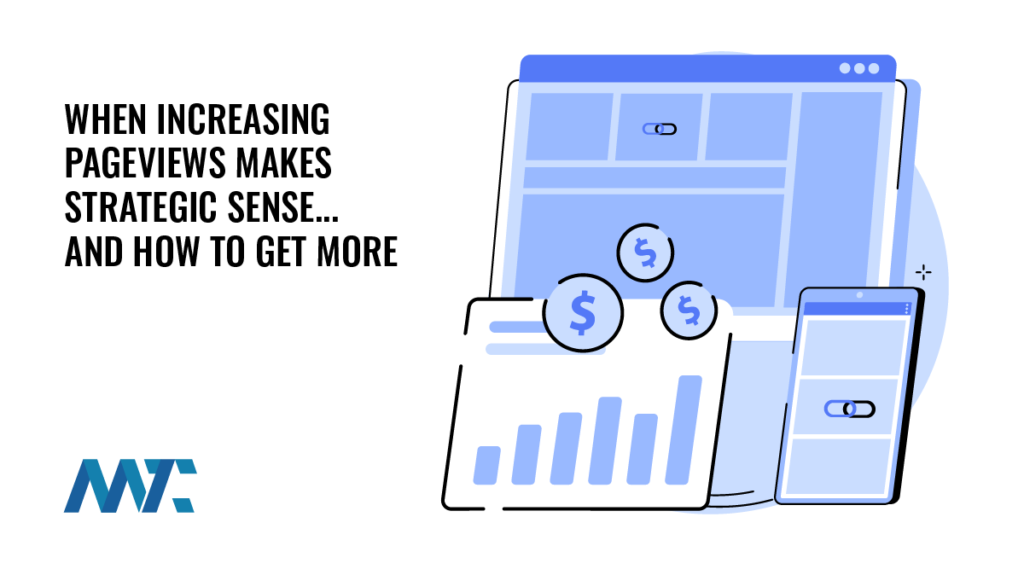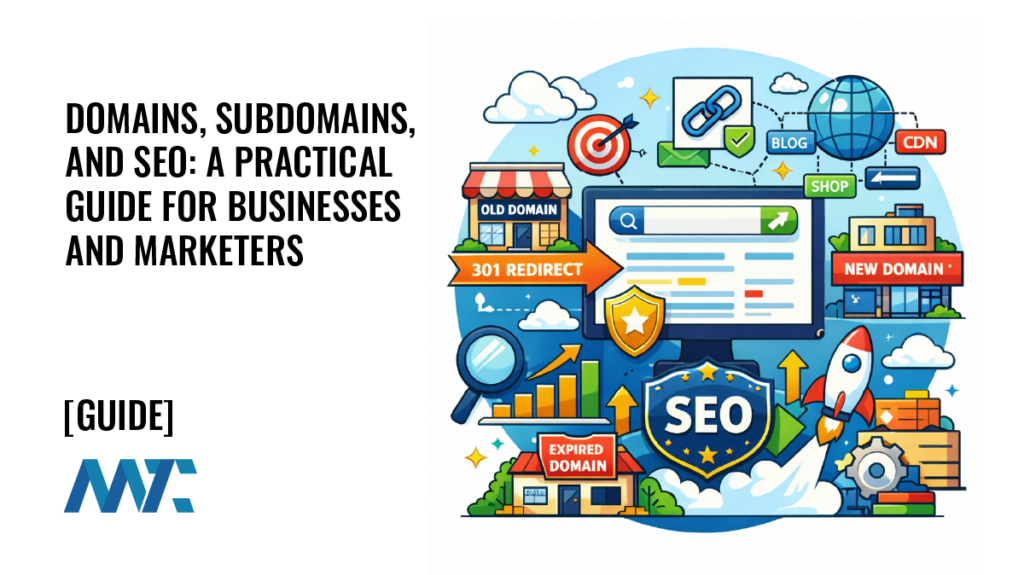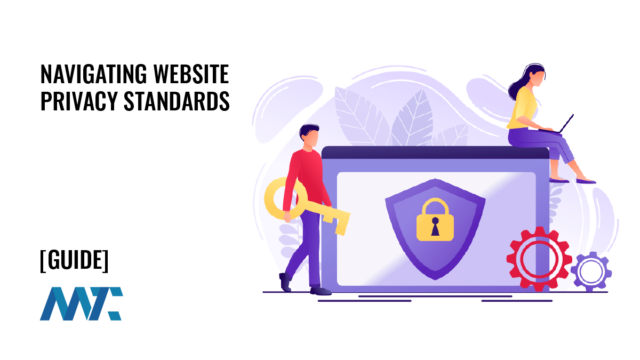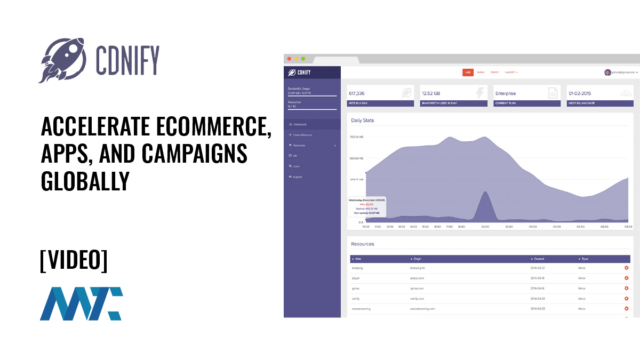The Features Every Content Management System (CMS) Or E-commerce Platform Must Have For Search Engine Optimization (SEO)

I met with a client who has been struggling with their search engine rankings. As I reviewed their Content Management System (CMS), I looked for some basic best practices that I could not find. Before I provide a checklist to verify with your CMS provider, I should first state that there is absolutely NO reason for a company NOT to have a content management system anymore.
A CMS will provide you or your marketing team to change your site on the fly without the need for a web developer. The other reason why a Content Management System is a necessity is most of them automate best practices for optimizing your site.
The SEO purists may argue against some of the features I discuss here because they may not directly attribute to ranking. I’d argue with any Search Engine Guru, though, that search engine ranking is about user experience – not search engine algorithms. The better and faster you design your site, invest in great content, promote that content, and engage with your users… the better your site will perform in organic search rankings.
The mechanics of how a search engine crawler finds, indexes, and ranks your site haven’t changed much over the years… but the ability to attract visitors, have those visitors share your content, and have the search engines respond has demonstrably changed. Good SEO includes a great user experience… and a content management system is critical to your success.
Search engine optimization is truly search visitor optimization. I’m going to break this list into the benefits of their impact. Within each, the features are listed in alphabetical order – not by their impact on ranking. It’s also important to note that a feature doesn’t have to be core to your CMS, it can be provided through a plugin, extension, add-on, or theme customization.
1. Speed and SEO
Fast sites provide a great user experience, so sites are absolutely indexed and ranked, in part, by how fast the pages and other media load. Google provides support for you to monitor your core vital web vitals for this reason.
- Caching: Each time a page is requested, a database lookup grabs the content and puts together the page. This takes resources and time… time that hurts your search engine optimization. Getting a CMS or host with caching capabilities is key to speeding up your site and reducing the resources required of your server. There are multiple types of caches – object caching for database queries and third-party systems, fragment caching for parts of a web page, and page caching to store a fully generated page for retrieval. Caching can also help you when you get an onslaught of traffic… cached pages are easier to render than uncached pages.
- Content Delivery Network (CDN): A content delivery network is a network of computers that are geographically located that store static resources locally… allowing pages to load a lot quicker. As well, when a CDN is implemented, your page requests can load assets from your web server AND your CDN at the same time. This reduces the load on your web server and increases the speed of your pages significantly.
- Database Optimization: Optimizing the database can improve the performance of the website by reducing the time it takes to execute queries and retrieve data.
- High-Performance Hosting: Speed is everything when it comes to search engines. If you’re trying to save a few bucks on hosting, you’re absolutely destroying your ability to get indexed and ranked well on search engines. As well, a shared hosting environment rather than a dedicated or virtual environment could make your site slow down when other sites sharing the server are busy.
- Image Compression: Images are often exported into unnecessarily large files. Integrating with an image compression tool to reduce the file size and resize images for optimal viewing is critical. New image formats like .webp are also enabling faster image serving.
- Lazy Loading Images: Search engines love long content with a lot of media. But loading media can slow your site to a crawl. Lazy loading is a means to load images after the initial page loads but before the visitor is going to see the object. This allows the page to load much faster, then only display the media when the user is going to reach its location.
- Minification: HTML, CSS, and JavaScript are typically generated with unnecessary characters such as white space and comments. Removal of those features can significantly reduce the size of a page, speeding up the site significantly.
- Prefetching: Prefetching is a technique used to improve the performance of a website or web application by proactively loading resources that may be needed in the future. When a web browser encounters a prefetching hint, it will start to download the specified resources in the background, so that they are available for use when needed.
2. Indexing and SEO
When your site is registered with a search engine or it becomes aware of your site, it crawls some necessary files to understand what to index, then crawls your pages to assess where and how your site should be ranked based on your site’s popularity. Incorporating all the necessary indicators helps the search engine to better comprehend your site’s content… which can pinpoint the terms that you wish to be found for.
- Breadcrumbs: If you’ve got a lot of information hierarchically organized, the ability for users (and search engines) to understand that hierarchy is critical to how they view your content and index it properly. Breadcrumbs must be coded in accordance with Schema requirements to be optimized.
- Canonical URLs: Sometimes sites are published with a single page having multiple paths. A simple example is your domain might have https://yourdomain.com or https://yourdomain.com/default.aspx. These two paths to the same page may split the weight of incoming links where your page isn’t ranked as well as it could be. A canonical URL is a hidden piece of HTML code that tells the search engines which URL they should be applying the link to.
- Content Editor: A content editor that allows H1, H2, H3, strong, and italics text is critical. Image editing should allow ALT elements to be modified. Anchor tag editing should allow for TITLE element editing. It’s unfortunate how many CMS systems have poor content editors!
- Comments: Great comments add value to your content by enhancing the relevant content with additional content and providing changes in the content that drive the search engines to return and reindex the content. Just be sure you can moderate comments as there are a ton of bots out there spamming CMS platforms to attempt to generate links.
- HTML5: The latest version of HTML has semantic tagging (heading, sidebar, footer, etc.) rich media support, and additional features for mobile friendliness.
- Meta Descriptions: Search engines typically capture the meta description of a page and show that under the title and link in a search engine results page. When no meta description exists, search engines may grab text randomly from the page… a practice that will lower your click-through rates on your links on search engines and may even hurt your page’s indexing. Your CMS should allow you to edit the meta description on each and every page of the site.
- Pings: When you publish your content, the CMS should automatically submit your site to Google and Bing without any intervention. This will initiate a crawl from the search engine and get your new (or edited) content reindexed by the search engine. Sophisticated CMS engines will even Ping the search engines upon scheduling content.
- Redirects: Companies often change and reconstruct their sites. The problem with this is that the search engine may still be pointing a URL to a page that does not exist. Your CMS should allow you to refer traffic to a new page and redirect the search engine there as well so they find and index the new page.
- Reviews: Reviews not only provide a visible indicator of trust for your products or services, they also provide structured data that can enable great ranking, enhance your SERP visibility, and drive additional clicks to your site.
- Rich Snippets: Search engines offer microdata formats for pagination and breadcrumb identification within your site. Often, this markup needs to be applied within the theme you’re deploying with your CMS or you can find modules that allow you to implement structured data easier. Rich snippets like Schema for Google and OpenGraph for Facebook enhance search engine results and sharing and will drive more visitors to click through.
- Robots.txt: If you go to the root (base address) of your domain, add robots.txt to the address. Example: http://yourdomain.com/robots.txt Is there a file there? A robots.txt file is a basic permissions file that tells a search engine bot/spider/crawler what directories to ignore and what directories to crawl. In addition, you can add a link to your sitemap in it!
- HTTPS: Websites that use SSL encryption are usually accessed using HTTPS (Hypertext Transfer Protocol Secure), which is the secure version of HTTP. Google has stated that it uses HTTPS as a ranking signal, which means that websites that use HTTPS may have an advantage in search results.
- Tagging: Search engines largely ignore a meta tag for keywords, but tagging can still come in handy – if nothing else to keep in mind the keywords that you are targeting with each page. Tags often help find and display relevant posts and search results within your site. They also help considerably with internal site searches.
- Template Editor: A robust template editor that avoids any use of HTML tables and allows for nice clean HTML and attached CSS files to properly format the page. You should be able to find and install templates without having to do any significant development to your site while maintaining your content with no issues.
- Title Tag Editing: The title that is presented to search engines may be optimized differently from your literal page title. Title tag optimization is a critical step in optimizing your content.
- XML Sitemaps: A dynamically generated sitemap is a key component that provides search engines with a map of where your content is, how important it is, and when it was last changed. If you have a large site, your sitemaps should be compressed. If a sitemap exceeds 1Mb, your CMS should generate multiple sitemaps and then chain them together so the search engine can read all of them.
3. Stability and SEO
A site full of malware or that disappears overnight isn’t going to rank well. Having some core backup and security features is a must.
- Backups: Backups and SEO? Well… if you lose your site and content, it’s pretty difficult to rank. Having a solid backup with incremental backups as well as on-demand, off-site backups, and one-click restores are extremely helpful.
- Security: A solid security model and safe hosting will protect your site from getting attacked or having malicious code placed on it. If your site gets malicious code on it, Google will de-index you and notify you versus Webmasters. It’s imperative that you have some kind of monitoring or security features integrated into your CMS or on your hosting package these days.
4. Mobile and SEO
Mobile search has skyrocketed thanks to smartphones and available bandwidth. Your CMS must serve mobile visitors… which is over half of all search engine users.
- Accelerated Mobile Pages: Mobile formats like AMP can get your content ranked well for searches due to their lightweight structure.
- Responsive Website Themes: Mobile search is exploding in usage as smartphones and tablets are adopted throughout. If your CMS doesn’t allow for a responsive website utilizing HTML5 and CSS3 (best option)… or at least a redirect to a well-optimized mobile template, you simply won’t be ranked for mobile searches.
5. Syndication and SEO
The ability to syndicate your products or content across sites can drive additional readership which can turn into additional backlinks to your site.
- Feeds: If you have other properties and want to publicize your blog or share your products, having feeds to easily publish the content is critical. In e-commerce, the ability to feed your products and associated data to Google Shopping is essential.
- Social Publishing: The ability to automatically publish your content with optimized titles and images will get your content shared. Shared content leads to mentions of your content. Mentions lead to links. And links lead to ranking. Facebook is also launching Instant Articles, a format to publish entire articles directly to your brand’s pages.
6. Retention and SEO
Acquisition of search engine users requires a significant investment. With that in mind, what are the features that you’ve incorporated into your web presence to ensure a first-time visitor is returning?
- Browser Notifications: Chrome and Safari now offer integrated notifications with operating systems. When someone lands on your site, they are asked if they’d like to be notified when the content is updated. Notifications keep visitors coming back!
- Integrations: The ability to extend the functionality of your content with lead generation, email marketing, marketing automation, social media marketing, and other platforms that help you acquire and retain traffic.
- Internal Search: The ability to search internally and display relevant results is imperative for users to find the information they’re seeking. Search engine results pages will often provide a secondary field for search users to search within a site as well!
- Lead Management: After prospects have found your article, how do they communicate with you? Having form designers and a database to capture leads is a must.
7. Analytics and SEO
You can’t improve what you can’t measure.
- Tag Management: The ability to utilize a tag management system to deploy analytics scripts, event tagging, and third-party measurement and lead generation tools is essential to monitoring your site’s performance on search engines so that you can optimize it further.
I’ll go out on a limb here and state; if your agency is charging you for content updates and you don’t have access to a content management system to optimize your site… it’s time to leave that agency and find yourself a new one with a solid content management system. Agencies sometimes design complex sites that are static and require you to change for content changes as you need them… unacceptable.
Note: This isn’t an exhaustive list of every website feature, just the ones that I believe are critical to your ability to rank well on search engines.







